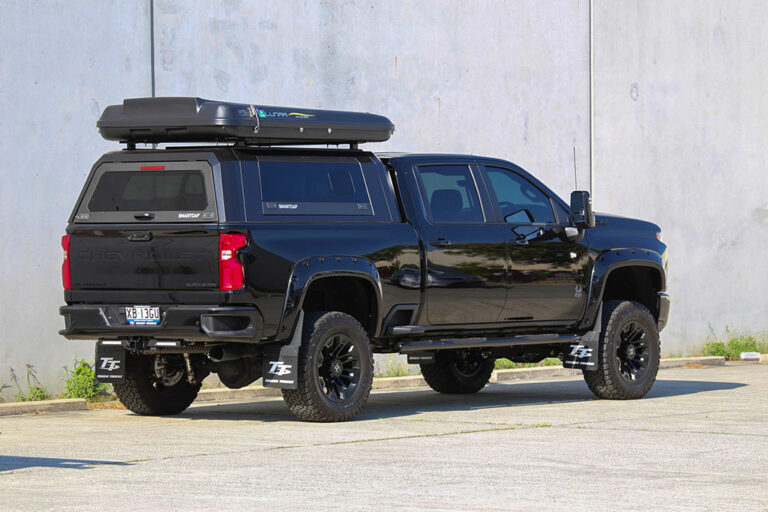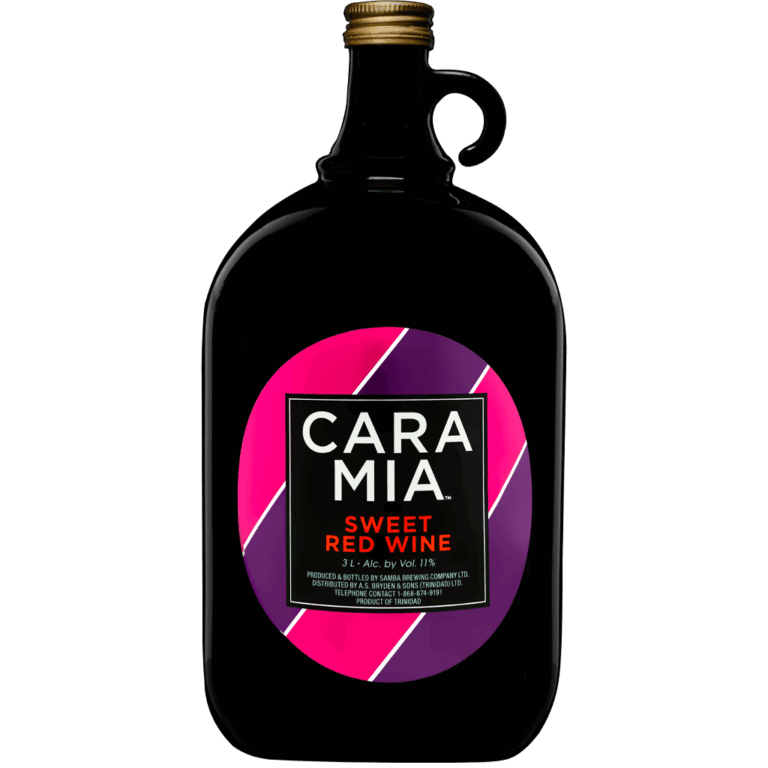Will A Camper Top That Came Off Of A Silverado Fit A Silverado? A Comprehensive Guide
Will A Camper Top That Came Off Of A Silverado Fit A Silverado? A Comprehensive Guide cars.truckstrend.com
The open road beckons, your Silverado is ready for adventure, but you need a secure, weatherproof space for your gear. A camper top, also known as a truck cap or truck shell, is the perfect solution. But what if you’ve found a great deal on a used camper top, or you’re upgrading your Silverado and want to bring your existing shell with you? The burning question arises: Will a camper top that came off of one Silverado fit another Silverado?
This seemingly simple question opens up a complex world of truck bed dimensions, generational changes, and subtle design nuances. For many Silverado owners, understanding this compatibility is crucial – it can save hundreds, if not thousands, of dollars compared to buying a new shell, or prevent the frustration of a costly mistake. This comprehensive guide will meticulously explore every facet of Silverado camper top compatibility, providing you with the knowledge and practical steps to make an informed decision.
Will A Camper Top That Came Off Of A Silverado Fit A Silverado? A Comprehensive Guide
Understanding Truck Bed Dimensions and Silverado Generations
At the heart of camper top compatibility lies the truck bed itself. While all Silverados share a common lineage, their beds are not universally interchangeable across all model years. The primary factors are bed length, bed width, and even subtle changes in bed rail design and height.
Key Dimensional Factors:
-
Bed Length: This is the most critical factor. Silverados typically come in three main bed lengths:
- Short Bed (SB): Approximately 5’8" to 5’10" (depending on generation/cab style).
- Standard Bed (StdB): Approximately 6’6".
- Long Bed (LB): Approximately 8′.
A camper top designed for a short bed will absolutely not fit a standard or long bed, and vice-versa. The length must match precisely.

-
Bed Width: While often overlooked, bed width can vary slightly between Silverado generations, even for the "same" bed length. These differences might be subtle (e.g., an inch or less), but they can be enough to create fitment issues, gaps, or make the shell impossible to properly clamp down. The width is typically measured at the top of the bed rails.
-
Bed Rail Design and Height: Modern truck beds feature integrated bed rail caps that are often thicker or shaped differently than older models. The height of the bed rails relative to the cab can also influence the aesthetic and aerodynamic fit of a shell, ensuring it sits flush with the cab roof line.
Silverado Generations and Their Impact:
Chevrolet Silverado trucks have undergone several significant redesigns, often referred to as "generations." Each new generation typically brings changes to the frame, body, and often, the dimensions of the truck bed.
- GMT400 (1988-1998, with 1999 Classic): Older square body styles.
- GMT800 (1999-2007 Classic): Introduced the rounded, more aerodynamic design.
- GMT900 (2007-2013, with 2014 Classic): Further refinement, often with slightly different bed dimensions.
- K2XX (2014-2018, with 2019 LD/Limited): Significant redesign, often with distinct bed characteristics.
- T1XX (2019-Present): The latest generation, featuring different bed dimensions and styling, including the multi-flex tailgate options.
Generally, a camper top has the highest probability of fitting if it comes from a Silverado of the same generation and the same bed length. Cross-generational fitment becomes progressively more challenging due to changes in width, bed rail shape, and cab height.
Critical Measurements for Camper Shell Fitment
To determine compatibility, precise measurements are paramount. Do not rely solely on advertised bed lengths, as slight variations exist, and the critical measurements are often the internal dimensions where the cap sits.
Measurements to Take on BOTH the Donor Truck (or shell) and the Recipient Truck:
-
Internal Bed Length:
- Measure from the inside of the bulkhead (the front wall of the bed, closest to the cab) to the inside of the tailgate (when closed).
- Ensure your measuring tape is resting on the bed floor, or just above it, to get the true length where the shell’s base will sit.
- Tolerance: A perfect match is ideal. A difference of 1/4 to 1/2 inch might be manageable with weather stripping, but anything more will result in significant gaps or overhangs.
-
Internal Bed Width (Front):
- Measure the inside width of the bed at the top of the bed rails, approximately 6-12 inches from the bulkhead.
- Measure from the innermost edge of one bed rail to the innermost edge of the other.
-
Internal Bed Width (Rear):
- Repeat the width measurement at the top of the bed rails, approximately 6-12 inches from the tailgate.
- Tolerance: This is where slight generational differences often appear. An ideal match is crucial. Even 1/2 an inch off can compromise the seal and clamping.
-
Cab Height (for Shell Clearance):
- Measure the height from the top of your truck’s bed rails to the highest point of your truck’s cab roof.
- Then, measure the height of the camper top from its base to its highest point (usually the front, where it meets the cab).
- The camper top should be slightly taller than or flush with the cab for proper aesthetics and aerodynamics. If it’s too short, it will look odd; if it’s too tall, it might create wind noise or look disproportionate. More critically, if the front of the shell is lower than the cab, it might contact the cab during chassis flex or bumps.
-
Tailgate Design and Bed Rail Cap Profile:
- Observe the curve and flushness of your Silverado’s tailgate where it meets the bed rails. Some shells are designed to sit flush with the tailgate, while others might have a slight overhang or recess.
- Examine the profile of the bed rail caps. Are they flat, rounded, or does the shell sit over them or between them? Aftermarket bed liners or rail caps can subtly alter dimensions.
Factors Influencing Compatibility
Beyond measurements, several practical factors determine the success of a swap:
- Same Generation, Same Bed Length: This is your golden ticket. If the donor and recipient Silverados are from the same generation (e.g., both K2XX models) and have identical bed lengths (e.g., both 6’6" standard beds), the likelihood of a perfect fit is extremely high, assuming no major custom modifications to either truck or shell.
- Adjacent Generation, Same Bed Length: This is a gamble. For example, a GMT900 shell on a K2XX truck of the same bed length. While the length might be spot on, subtle changes in bed width (front/rear) or bed rail cap design can cause issues with sealing, clamping, or aesthetics. It might work with some weather stripping and careful positioning, but it won’t be a factory-perfect fit.
- Different Generation, Same Bed Length (Significant Design Change): Less likely to fit well. For instance, a GMT800 shell on a T1XX Silverado. The body lines, bed rail profiles, and overall widths can be too different. You’d likely encounter large gaps, inability to clamp properly, or severe aesthetic mismatch.
- Different Bed Length: Absolutely impossible without major, costly, and usually impractical modifications to the shell itself. Don’t even consider it.
- Aftermarket Bed Liners/Caps: Drop-in bed liners can sometimes take up precious space, making a tight-fitting shell even tighter or causing issues with clamping. Spray-in liners are generally not an issue.
- Specific Camper Shell Brands/Models: Some cheaper, more generic shells might offer slightly more "flex" or larger sealing surfaces, making them marginally more forgiving. Premium, custom-fit shells are designed for very specific dimensions.
Potential Challenges and Solutions
Even with careful measurements, you might encounter issues:
- Slight Width Mismatch: If the shell is slightly too narrow, thicker adhesive weather stripping can sometimes bridge the gap, but this compromises the seal and aesthetics. If it’s too wide, it simply won’t seat properly.
- Slight Length Mismatch: An overhang at the tailgate or a gap at the bulkhead is unsightly and can lead to water intrusion.
- Cab Clearance Issues: If the shell’s front profile is too low, it can hit the cab during driving over bumps or uneven terrain, causing damage to both the shell and the truck’s paint. Solutions are limited and usually involve shimming the shell higher, which impacts aesthetics and seal.
- Mounting System Incompatibility: Different shells use different clamping mechanisms. Ensure the clamps are compatible with your truck’s bed rails or that you can acquire suitable replacements.
- Wiring for Lights/Third Brake Light: Camper tops often have internal lights and a third brake light. Wiring connectors and routing can vary significantly between models and generations, requiring electrical knowledge for proper hookup.
- Aesthetics: Even if it technically "fits," the body lines, paint match, and overall look might be off, detracting from your truck’s appearance.
When to Buy New vs. Used (Cost-Benefit Analysis)
The decision often comes down to budget versus certainty.
- Buying Used:
- Pros: Significant cost savings (often 50-80% off new price), immediate availability.
- Cons: Fitment uncertainty, limited color options (requiring repaint), potential for damage/wear, no warranty, less customization.
- Best for: Owners of Silverados from the same generation as the donor truck, or those with very flexible budgets for potential modifications or repaint.
- Buying New:
- Pros: Guaranteed perfect fit for your specific model and year, full warranty, choice of color, features (windows, racks, lighting), and customization options.
- Cons: High cost (typically $1,500 – $4,000+), potential lead times for manufacturing.
- Best for: Those who prioritize a perfect fit, specific features, and long-term durability, and whose budget allows for the investment.
Consider the value of your time and potential frustration. If a used shell requires extensive modifications, painting, and troubleshooting, the "savings" might quickly diminish.
Price Information: Camper Top Fitment Scenarios
This table provides a conceptual overview of the likelihood of fitment, associated costs, and effort for various Silverado camper top scenarios. Prices for used shells are highly variable based on condition, brand, and location. New shell prices are general estimates.
| Scenario | Likelihood of Fit (without issues) | Typical Cost Range (Used) | Typical Cost Range (New) | Effort Required (Installation & Issues) | Potential Issues & Considerations |
|---|---|---|---|---|---|
| Same Generation, Same Bed Length | Very High (90%+) | $500 – $1,500 | N/A (buy new specific) | Low – Medium | Minor sealing adjustments, wiring for lights. Paint match may be off. |
| Adjacent Generation, Same Bed Length | Medium (50-70%) | $300 – $1,000 | N/A | Medium – High | Subtle width mismatch, bed rail profile issues, cab clearance. May require extra sealing. |
| Different Generation, Same Bed Length | Low (10-30%) | $100 – $500 | N/A | High (often not worth it) | Major width/profile mismatch, large gaps, poor aesthetics. May not be clampable. |
| Different Bed Length | Effectively Zero | N/A | N/A | Extreme (custom fabrication) | Physically impossible without cutting/extending the shell, which is rarely practical or cost-effective. |
| Buying a New Custom-Fit Shell | Perfect (100%) | N/A | $1,500 – $4,000+ | Low | Cost is the primary factor. |
| General Used Shell (Donor Unknown) | Low to Medium | $200 – $1,000 | N/A | High (research & measurement) | Requires extensive research on donor vehicle, precise measurements, and willingness to accept imperfections. |
Note: "Cost Range (Used)" represents the price you might pay for the shell itself. "Cost Range (New)" is for a new, custom-ordered shell for your specific truck.
Frequently Asked Questions (FAQ)
Q1: How do I find out my Silverado’s exact bed length?
A1: Measure it yourself! Measure from the inside of the bulkhead (front of the bed) to the inside of the closed tailgate. Don’t rely solely on manufacturer specs, as slight variations exist, and marketing terms can be confusing. Common lengths are roughly 5’8", 6’6", and 8′.
Q2: My Silverado has a drop-in bed liner. Will that affect the fit?
A2: Yes, potentially. Drop-in bed liners can take up a small amount of space around the bed rails and in the corners, which might make a very tight-fitting camper top even tighter or prevent it from seating properly. Spray-in liners typically don’t cause issues.
Q3: What if the width of the camper top is off by an inch or two?
A3: An inch or two is usually too much. It will create significant gaps, compromise the weather seal, and may make it impossible to properly clamp the shell to the bed rails. This is generally not a fit you should pursue.
Q4: Do all Silverado models have the same bed depth (height from floor to rail)?
A4: Not exactly. While bed depth is generally consistent within a generation, there can be subtle changes between generations. More importantly, the height of the bed rails relative to the cab roof can change, affecting the aesthetic and aerodynamic "flushness" of the camper top with the cab.
Q5: Is it worth modifying a camper top to fit if it’s close but not perfect?
A5: For slight discrepancies (e.g., 1/4 inch off), minor modifications like adding thicker weather stripping might work. For larger issues, extensive modification (cutting fiberglass, welding, repainting) is usually more costly and time-consuming than buying a new or better-fitting used shell. It’s rarely worth the effort for significant mismatches.
Q6: Where can I find detailed bed dimensions for my specific Silverado model year?
A6: Your best bet is to measure your own truck. Online forums specific to Silverado generations (e.g., GMT800 forums, K2XX forums) sometimes have users who have posted detailed dimensions, or you can check the specifications section of your truck’s owner’s manual or Chevrolet’s official website for basic bed dimensions.
Conclusion
The question "Will a camper top that came off of a Silverado fit a Silverado?" has a nuanced answer: It depends entirely on the specific generation and bed dimensions of both the donor and recipient trucks. While the allure of a great deal on a used camper top is strong, the importance of precise measurements cannot be overstated.
By understanding the critical dimensions – bed length, width, and cab clearance – and recognizing the impact of Silverado’s generational changes, you can significantly increase your chances of a successful fit. Always measure twice (or thrice!), compare carefully, and be realistic about potential challenges. When in doubt, investing in a new, custom-fit camper top guarantees a perfect match and peace of mind, but with diligent research, a compatible used shell can be a fantastic, cost-effective solution for your Silverado adventures.





